Role of host cytokine responses in the pathogenesis of avian H5N1 influenza viruses in mice
- PMID: 17182684
- PMCID: PMC1866007
- DOI: 10.1128/JVI.02336-06
Role of host cytokine responses in the pathogenesis of avian H5N1 influenza viruses in mice
Abstract
Highly pathogenic avian H5N1 influenza viruses are now widespread in poultry in Asia and have recently spread to some African and European countries. Interspecies transmission of these viruses to humans poses a major threat to public health. To better understand the basis of pathogenesis of H5N1 viruses, we have investigated the role of proinflammatory cytokines in transgenic mice deficient in interleukin-6 (IL-6), macrophage inflammatory protein 1 alpha (MIP-1alpha), IL-1 receptor (IL-1R), or tumor necrosis factor receptor 1 (TNFR1) by the use of two avian influenza A viruses isolated from humans, A/Hong Kong/483/97 (HK/483) and A/Hong Kong/486/97 (HK/486), which exhibit high and low lethality in mice, respectively. The course of disease and the extent of virus replication and spread in IL-6- and MIP-1alpha-deficient mice were not different from those observed in wild-type mice during acute infection with 1,000 50% mouse infective doses of either H5N1 virus. However, with HK/486 virus, IL-1R-deficient mice exhibited heightened morbidity and mortality due to infection, whereas no such differences were observed with the more virulent HK/483 virus. Furthermore, TNFR1-deficient mice exhibited significantly reduced morbidity following challenge with either H5N1 virus but no difference in viral replication and spread or ultimate disease outcome compared with wild-type mice. These results suggest that TNF-alpha may contribute to morbidity during H5N1 influenza virus infection, while IL-1 may be important for effective virus clearance in nonlethal H5N1 disease.
Figures
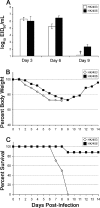

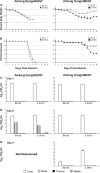
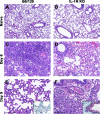
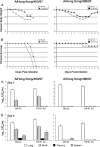
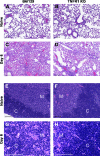
References
-
- Bender, C., H. Hall, J. Huang, A. Klimov, N. Cox, A. Hay, V. Gregory, K. Cameron, W. Lim, and K. Subbarao. 1999. Characterization of the surface proteins of influenza A (H5N1) viruses isolated from humans in 1997-1998. Virology 254:115-123. - PubMed
-
- Bright, R. A. 2002. Studies on pathogenicity and control of H5N1 influenza A viruses in mice. Ph.D. thesis. Emory University, Atlanta, GA.
-
- Centers for Disease Control and Prevention. 2004. Cases of influenza A (H5N1)—Thailand 2004. Morb. Mortal. Wkly. Rep. 53:100-103. - PubMed
-
- Chan, M. C., C. Y. Cheung, W. H. Chui, S. W. Tsao, J. M. Nicholls, Y. O. Chan, R. W. Chan, H. T. Long, L. L. Poon, Y. Guan, and J. S. Peiris. 2005. Proinflammatory cytokine responses induced by influenza A (H5N1) viruses in primary human alveolar and bronchial epithelial cells. Respir. Res. 6:135. - PMC - PubMed
-
- Cheung, C. Y., L. L. Poon, A. S. Lau, W. Luk, Y. L. Lau, K. F. Shortridge, S. Gordon, Y. Guan, and J. S. Peiris. 2002. Induction of proinflammatory cytokines in human macrophages by influenza A (H5N1) viruses: a mechanism for the unusual severity of human disease? Lancet 360:1831-1837. - PubMed
Publication types
MeSH terms
Substances
LinkOut - more resources
Full Text Sources
Other Literature Sources
Medical
Molecular Biology Databases
Research Materials

